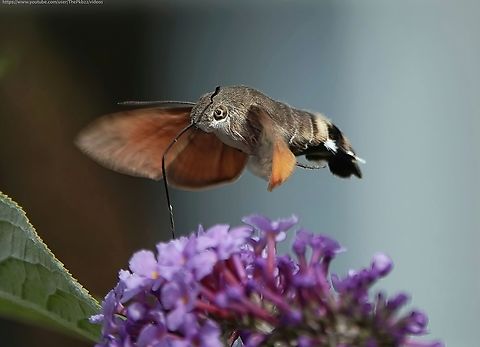 Promoted
Promoted
Hummingbird hawk-moth (Macroglossum stellatarum)
This is turning out to be a marvelous summer in the UK for this warm climate-loving moth. They are absolutely everywhere!
Just today I caught one in my hands to release it from my kitchen. No mean feat when this moth can beat its wings at 80 times/second and can fly at 12mph.
This is a classic example of convergent evolution, which has allowed this moth and real Hummingbirds to evolve entirely seperately, yet develop similar tools and traits.
However, those are not feathers you see in this photograph, but feather-like long hairs.
In common with other hovering insects, birds and bats, the Hummingbird hawk-moth generates lift by beating/rotating its wings in a shallow figure-eight pattern. This motion creates a spinning vortex of air on the upper surface of the wing, generating a well of low pressure. The higher pressure zone below the wing then pushes the moth upward, keeping it airborne.
Insect wings are relatively rigid compared to birds or bats, so they do this less efficiently.
To compensate, this moth beats those wings at up to 80 times per second, compared to (most) humingbirds (c50 beats) and bats (c17 beats).
The Hummingbird hawk-moth belongs to the Sphinx moth family (Sphingidae), so-called because of their resemblance to the Egyptian Sphinx.
Most moths in this family are nocturnal, while the day-flying Hummingbird hawk-moth has developed eyes packed at the centre with photoreceptors cells, allowing it to capture detail of objects immediately in front of them. This allows them to accurately judge the distance and movement of wind-swaying flowers.
A short illustrative video, with a link to others is available here:

The hummingbird hawk-moth is a species of hawk moth found across temperate regions of Eurasia. The species is named for its similarity to hummingbirds, as they feed on the nectar of tube-shaped flowers using their long proboscis while hovering in the air; this resemblance is an example of convergent evolution.

comments (10)
I love these moths and I'm thrilled there are so many here this year. Posted 3 years ago
I like it!
Why does it have the ring of Australian to it?
Thank you. Posted 3 years ago
I‘m German and worked with people from all over so I picked it up because I liked it as well.
Posted 3 years ago